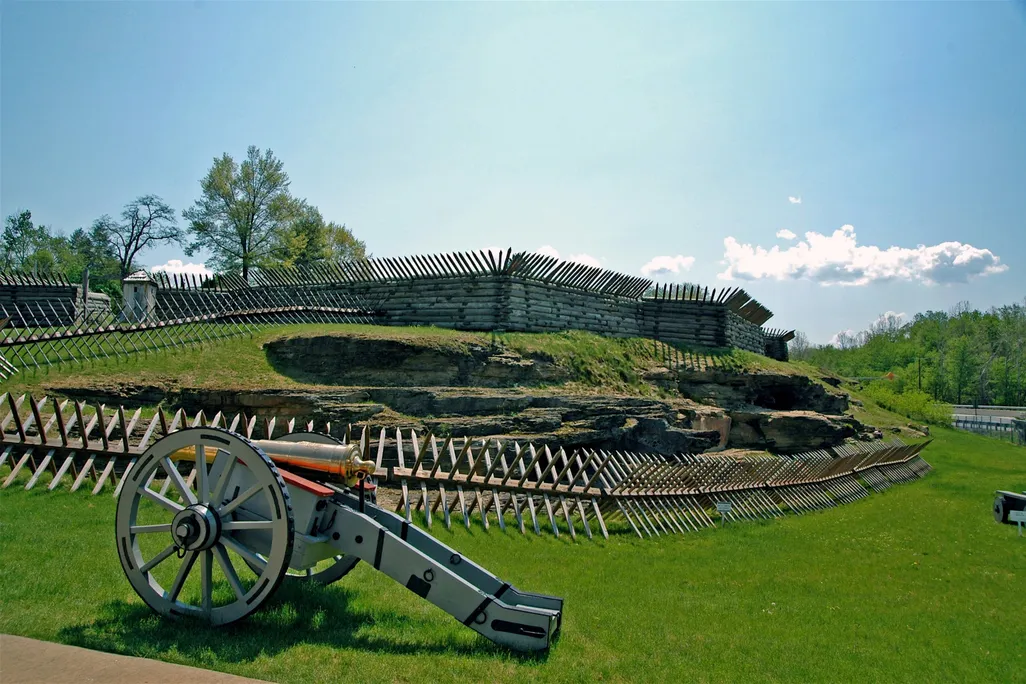Archaeologists Discover Site Where George Washington Stopped a Friendly Fire Incident by Blocking Muskets With His Sword
In 1758, during the French and Indian War, the future president saved lives by stepping into the middle of a deadly skirmish in Pennsylvania

Three decades before his election as the first president of the United States in 1789, George Washington commanded soldiers in the French and Indian War, gaining experience that would shape his future leadership of the nascent nation.
Now, archaeologists in Pennsylvania have identified the site of an oft-overlooked moment in Washington’s early military career: a 1758 friendly fire incident between Virginian troops. According to a biography written by the president’s friend and aide, Colonel David Humphreys, Washington put a stop to the clash by rushing “between [the] two fires, knocking up with his sword the presented pieces.” Washington “never was in more imminent danger” than at that moment, Humphreys claimed.
Since 2021, a team led by Jonathan Burns, an archaeologist at Juniata College, has been working with students and veterans on private land a few miles from Fort Ligonier, a military fortification built during the French and Indian War, to uncover physical evidence of the battle.
Did you know? How young George Washington started a war
In 2019, historian David Preston announced his discovery of an overlooked eyewitness account that suggests George Washington fired the first shot of the French and Indian War on May 28, 1754.
With tools like drones, metal detectors and computer-aided mapping, the team has discovered hundreds of artifacts dated to the 18th century, including musket balls, buttons, nails, buckles, ammunition and even a French watch key, reports the New York Times’ Jennifer Schuessler. The areas where the objects were found align with historical accounts of troop movements during the deadly encounter, allowing experts to pinpoint its exact location.
“This is extremely nationally significant,” Burns tells CBS News’ Christopher DeRose. “It’s not only got a historic event [but also] a historic individual. It doesn’t get any more significant than George Washington here in this county.”
Burns runs Juniata’s Veterans Archaeology Program, which trains former service members in fieldwork and asks them to draw on their combat experience to interpret historical battlefields. “These folks have been in firefights and understand what it’s like to be isolated in an area where the enemy has the upper hand,” he tells the Times.
/https://tf-cmsv2-smithsonianmag-media.s3.amazonaws.com/filer_public/b2/dc/b2dc8eea-d641-443c-880a-56bd28f3fd2c/washington_1772.jpg)
The French and Indian War was the North American front of a much larger global conflict between Great Britain and France, which was later known as the Seven Years’ War. It was fought over control of territory, trade and influence, especially in the Ohio River Valley. Some Native American tribes allied with Britain, while others sided with France. Washington, for his part, led a British regiment of men from Virginia.
Humphreys’ biography of Washington, written around 1786, sheds light on the future president’s experiences during the French and Indian War. After correcting Humphreys’ draft with edits he referred to as his “Remarks,” Washington instructed his friend to destroy the manuscript. Luckily for historians, Humphreys preserved it instead. Thanks to that act of disobedience, the document is now preserved at Fort Ligonier.
The biography describes a moment of confusion when Washington’s army was encamped about 50 to 60 miles away from the French-held Fort Duquesne, in what is now Pittsburgh. On the foggy evening of November 12, 1758, two groups of Virginia soldiers—Washington’s and Lieutenant Colonel George Mercer’s—mistook each other for enemies in the woods.
A chaotic exchange of friendly fire followed. As shots rang out, dozens were injured, and multiple people were killed. (Estimates of the death roll vary widely, from around 13 to nearly 40.) Washington heroically rode between the lines and used his sword to stop soldiers from firing on their comrades.
The case of mistaken identity, caused by poor visibility and a lack of communication, had fatal consequences—but it also resulted in the capture of three French soldiers who revealed that Fort Duquesne was vulnerable, low in both manpower and supplies. The British advanced, staking their claim to the land after the French abandoned and burned down the fort.
Some of the items unearthed at the site of the friendly fire incident are now on view at Fort Ligonier alongside Washington’s “Remarks” manuscript.
“We get to open the pages of history and pull back the veil in a moment and place in George Washington’s life that is often overlooked,” Matthew Gault, Fort Ligonier’s director of education, tells TribLive’s Jeff Himler.
Washington’s only official record of the skirmish was a short entry in his orderly book. According to Gault, however, the soon-to-be commander in chief’s notes on Humphreys’ manuscript suggest it was a meaningful experience for him.
“He has just won the American Revolution, and now he’s about to become president of a new nation,” Gault tells the New York Times. “And here he is reflecting on a moment where he made a mistake.”
/https://tf-cmsv2-smithsonianmag-media.s3.amazonaws.com/accounts/headshot/aurora.png)
